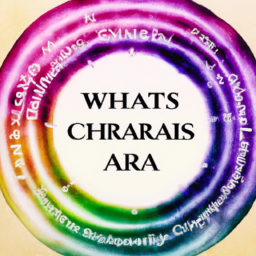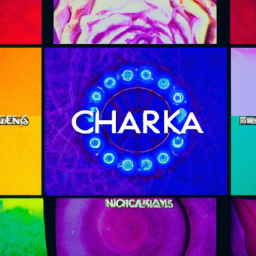Data has shown that one of the most effective ways to promote physical, emotional, and spiritual well-being is through the balancing and awakening of our chakras. But what exactly are these chakras, and where are they located within our bodies? In this article, we will dive into the fascinating world of chakras and explore their specific locations and functions.
But first, let’s start with a brief overview of what chakras are. In Sanskrit, the word “chakra” translates to “wheel” or “disk.” This is because chakras are believed to be energetic centers within our body that spin and vibrate at different frequencies. They are often represented as colored wheels or lotus flowers, with each chakra having its own unique color and symbol.
According to ancient Indian and Eastern spiritual traditions, there are seven main chakras located along the spine, from the base to the crown of the head. Each chakra is associated with specific organs, glands, emotions, and aspects of our physical, mental, and spiritual well-being.
Now, let’s take a closer look at each chakra and their locations:
1. Root or Muladhara Chakra (Red)
Located at the base of the spine, the root chakra is associated with our sense of security, stability, and basic survival needs. It governs our legs, feet, and lower body, as well as our adrenal glands.
2. Sacral or Svadhisthana Chakra (Orange)
Located just below the navel, the sacral chakra is associated with our creativity, passion, and sexuality. It governs our reproductive organs, as well as our ovaries and testes.
3. Solar Plexus or Manipura Chakra (Yellow)
Located at the solar plexus, the third chakra is associated with our personal power, self-esteem, and confidence. It governs our digestive system, stomach, and pancreas.
4. Heart or Anahata Chakra (Green)
Located at the center of the chest, the heart chakra is associated with love, compassion, and forgiveness. It governs our heart, lungs, thymus gland, and immune system.
5. Throat or Vishuddha Chakra (Blue)
Located at the throat, the fifth chakra is associated with communication, expression, and speaking our truth. It governs our throat, thyroid gland, and respiratory system.
6. Third Eye or Ajna Chakra (Indigo)
Located between the eyebrows, the third eye chakra is associated with intuition, imagination, and spiritual awareness. It governs our pituitary gland, eyes, and brain.
7. Crown or Sahasrara Chakra (Violet or White)
Located at the top of the head, the crown chakra is associated with our connection to the divine, spiritual enlightenment, and cosmic consciousness. It governs our pineal gland and central nervous system.
Now that we have a better understanding of the locations and functions of each chakra, let’s delve into why it is essential to keep them balanced and awakened.
When our chakras are in balance, energy flows freely through our body, promoting physical, emotional, and spiritual well-being. However, if one or more chakras are blocked or imbalanced, it can lead to various physical and emotional issues. For example, a blocked root chakra may manifest as physical ailments in the legs or feet, while an imbalanced sacral chakra may lead to issues with sexuality or creativity.
Fortunately, there are various practices and techniques that can help us balance and awaken our chakras. These include yoga, meditation, breathwork, chanting, Reiki, and other energy healing modalities.
In conclusion, the locations of our chakras may seem abstract and mystical, but they play a significant role in our overall well-being. By understanding and working with our chakras, we can achieve a sense of balance, harmony, and alignment within ourselves. So, take some time to explore and nurture your chakras, and watch as your mind, body, and spirit thrive in unison.





Very informative
JennyPoole: Great article!
Very interesting – looks like a good resource for exploring chakras in more detail!